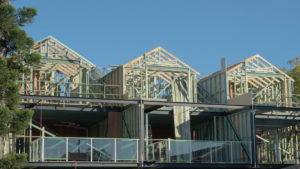New energy efficiency provisions aiming to increase energy efficiency by 30-40% were introduced with the release of NCC 2019 on 1st May, 2019. As the changes were quite significant, compulsory adoption was delayed until 1st May, 2020. For the last 12 months, the Energy Efficinecy provisions in NCC 2016 and NCC 2019 have been valid.
The unchanged aim of the legislation is to reduce Greenhouse Gas Emissions attributable to the operation of buildings, and the focus in Section J is on air-conditioned zones and ensuring they are constructed in an energy efficient way, and on energy used in lighting and heating pools etc.
The Performance Requirements have been simplified and now include a target energy use measure for different classes of buildings. These requirements can still be met by:
-
A performance solution
-
A Deemed to Satisfy Solution (Section J)
-
A combination of the above two methods (e.g. Roof met by Performance Solution, remainder by Deemed To Satisfy)
Performance Solution Methods
Within the performance solution method, there are four compliance pathways:
- JV1 is new, allowing for minimum 5.5 Star NABERS rating to show compliance for Office Buildings.
- JV2 is also new, allowing for a Green Star Assessment to show compliance.
- JV3 is a continuation of the software generated Verification Using a Reference Building method, although the measurement criteria have been increased in line with the 2019 provisions
- JV4 allows for blower testing to show compliance with the sealing provisions
JV 1-3 require building modelling in specialised software and are a more complex and therefore more costly way to achieve compliance with the Performance Requirements.
Deemed To Satisfy (Section J) Method
With the Section J Deemed To Satisfy solution, there are numerous changes to the legislation – some of them quite significant. As with the performance solution methods, these changes entail an increase in stringency, leading to more energy efficient buildings. The changes to the Section J Deemed To Satisfy requirements are more significant than the chnages to the JV3 method. This results in more flexibility in using the Section J Deemed To Satisfy method, and broadens the range of projects that will be suitable for a Deemed to Satisfy solution.
These changes will be discussed in more detail in a future blog post, to be published shortly.

